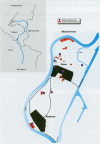Abstract
At the end of December 1993 and also at the end of January 1995, the river Meuse, one of the major rivers in Europe, flooded and river banks were inundated. We investigated the possible health risks of exposure to heavy metal concentrations in river bank soils resulting from the flooding of the river Meuse at the end of 1993. Soil and deposit samples and corresponding aerable and fodder crops were collected and analyzed for heavy metals. Although the soils of the floodplain of the river Meuse appeared severely polluted mainly by Cd and Zn, the heavy metal concentrations in the crops grown on these soils were within background ranges. Incidentally, the legal standard for Cd as endorsed by the Commodities Act was exceeded in wheat crops. The main exposure pathways for the general population were through the consumption of food crops grown on the river banks and through the direct ingestion of contaminated soils. For estimating potential human exposure in relation to soil pollution, we used a multiple pathway exposure model. For estimating the actual risk, we determined metal contents of vegetables grown in six experimental gardens. From this study, it can be concluded that there is a potential health risk for the river bank inhabitants as a consequence of Pb and Cd contaminations of the floodplain soils of the river Meuse, which are frequently inundated (averaged flooding frequency once every 2 years).
Full text
PDF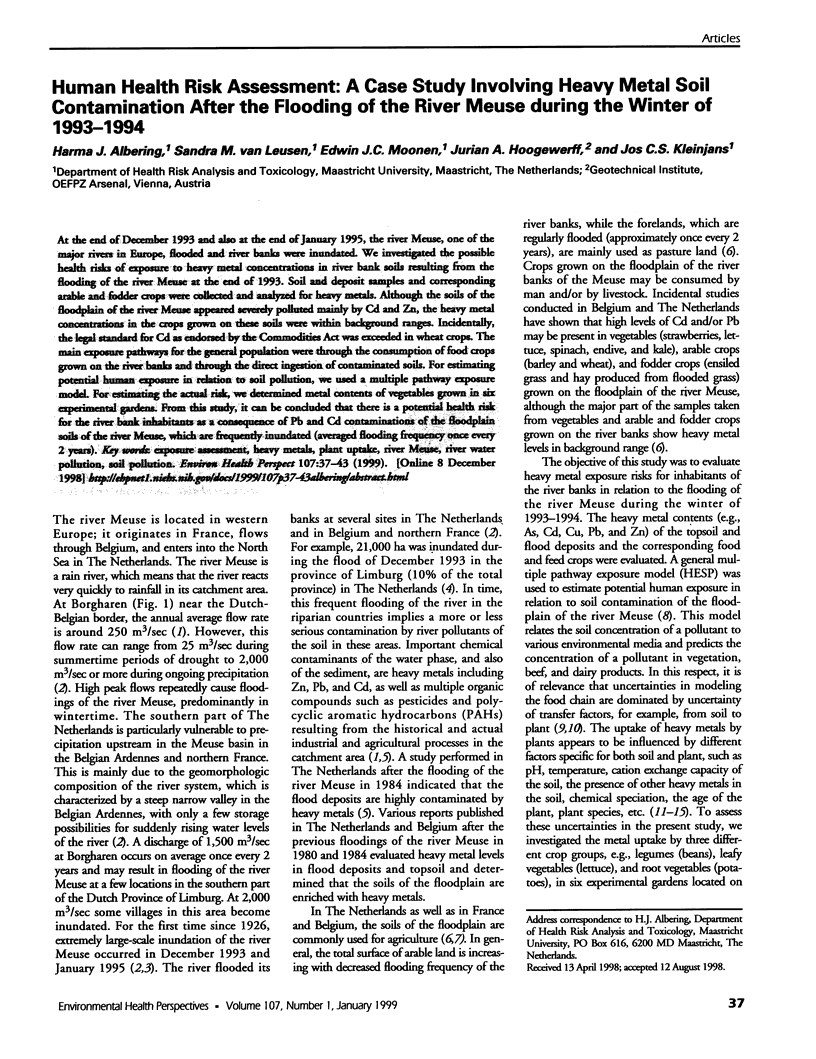
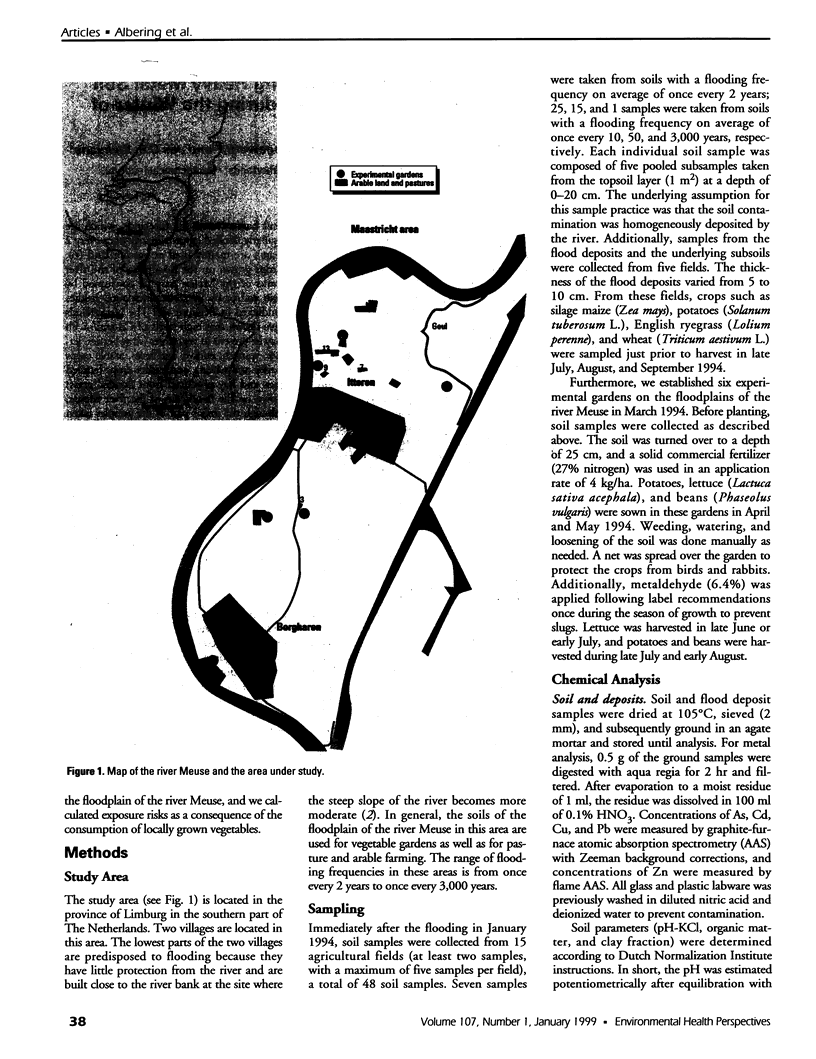
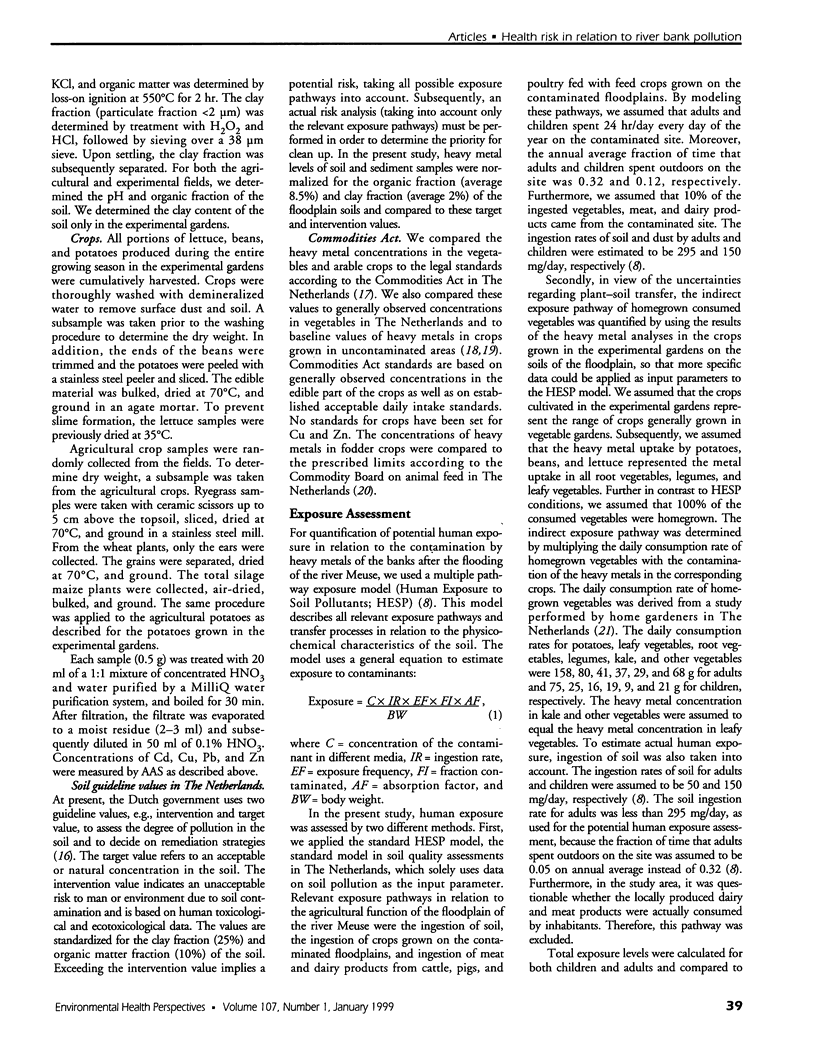
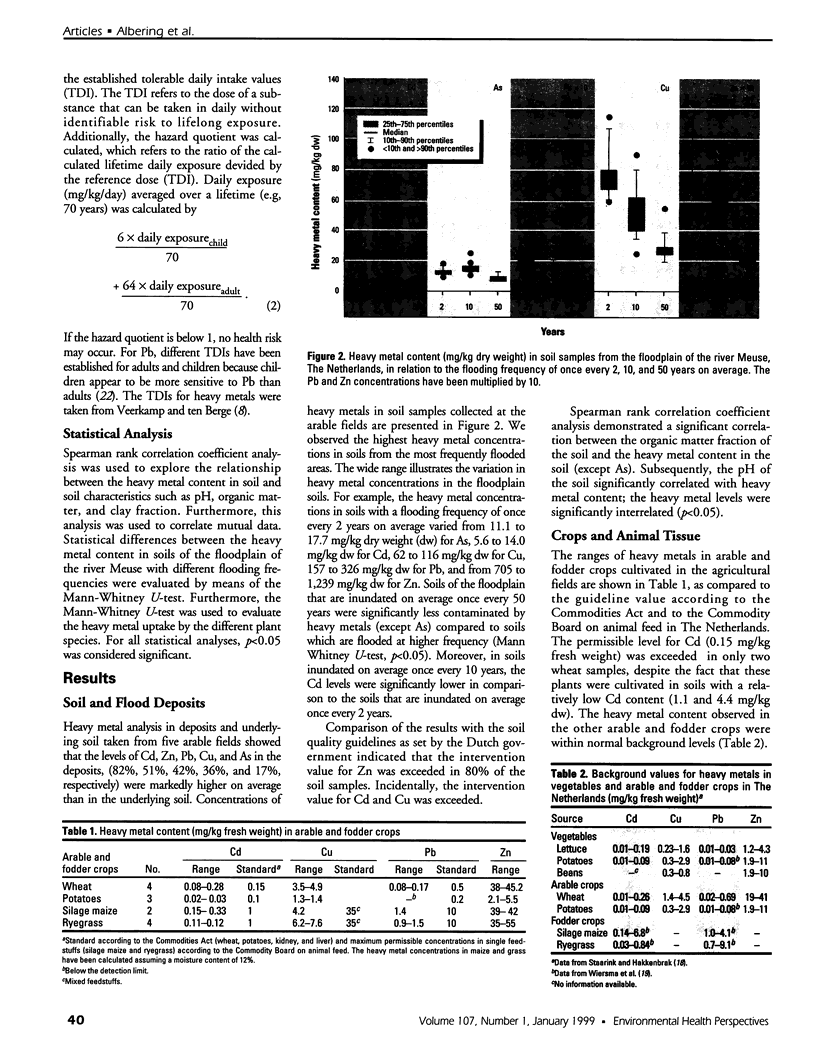
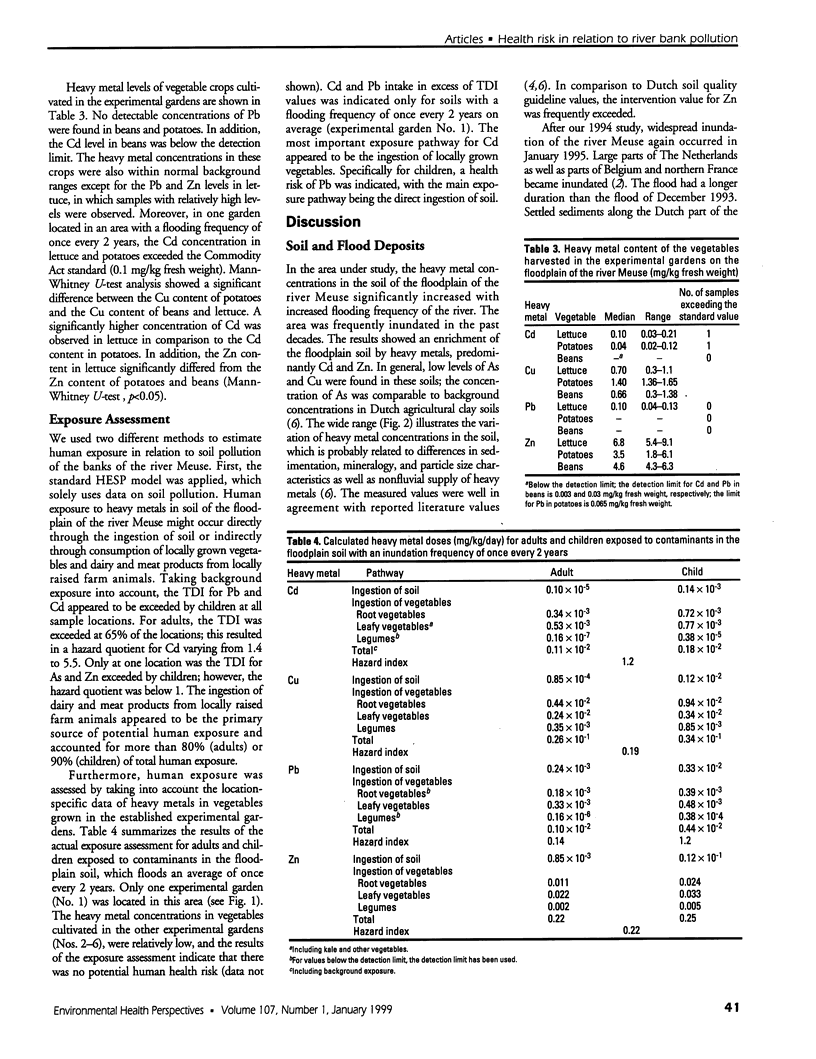
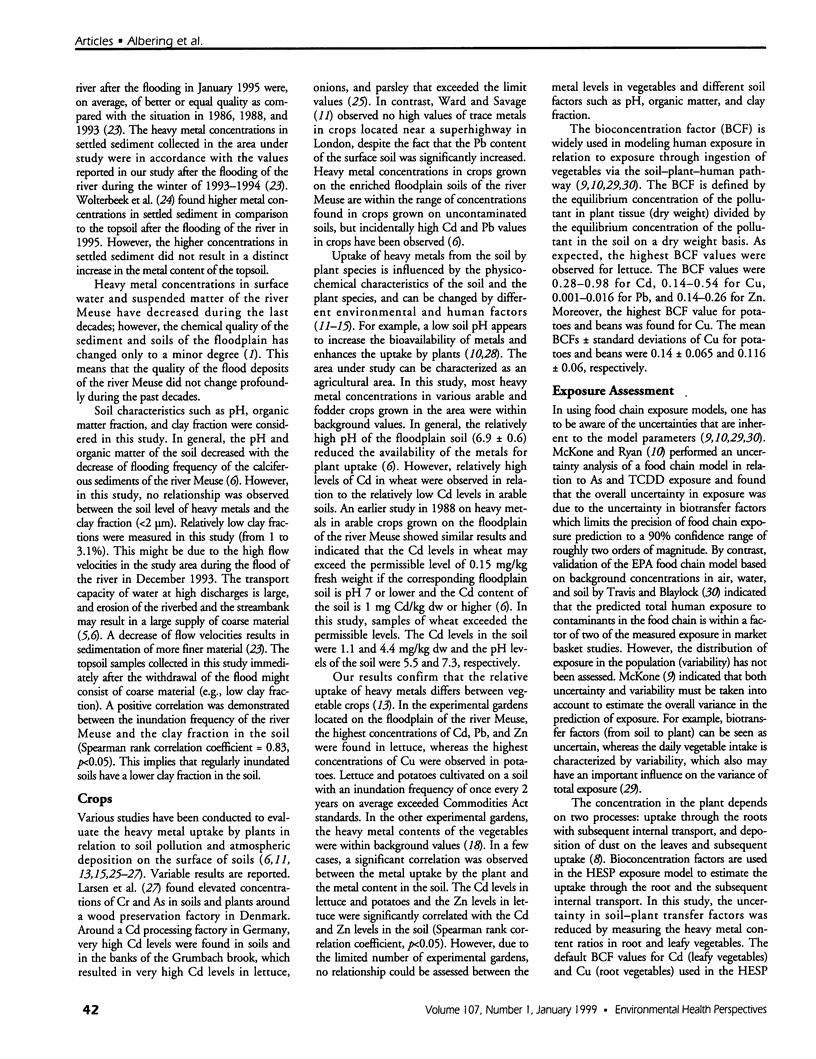

Images in this article
Selected References
These references are in PubMed. This may not be the complete list of references from this article.
- Bowers T. S., Beck B. D., Karam H. S. Assessing the relationship between environmental lead concentrations and adult blood lead levels. Risk Anal. 1994 Apr;14(2):183–189. doi: 10.1111/j.1539-6924.1994.tb00043.x. [DOI] [PubMed] [Google Scholar]
- Larsen E. H., Moseholm L., Nielsen M. M. Atmospheric deposition of trace elements around point sources and human health risk assessment. II. Uptake of arsenic and chromium by vegetables grown near a wood preservation factory. Sci Total Environ. 1992 Sep 25;126(3):263–275. doi: 10.1016/0048-9697(92)90201-3. [DOI] [PubMed] [Google Scholar]
- McKone T. E. Uncertainty and variability in human exposures to soil contaminants through home-grown food: a Monte Carlo assessment. Risk Anal. 1994 Aug;14(4):449–463. doi: 10.1111/j.1539-6924.1994.tb00263.x. [DOI] [PubMed] [Google Scholar]
- Staessen J. A., Vyncke G., Lauwerys R. R., Roels H. A., Celis H. G., Claeys F., Dondeyne F., Fagard R. H., Ide G., Lijnen P. J. Transfer of cadmium from a sandy acidic soil to man: a population study. Environ Res. 1992 Jun;58(1):25–34. doi: 10.1016/s0013-9351(05)80202-6. [DOI] [PubMed] [Google Scholar]
- Stern A. H. Monte Carlo analysis of the U.S. EPA model of human exposure to cadmium in sewage sludge through consumption of garden crops. J Expo Anal Environ Epidemiol. 1993 Oct-Dec;3(4):449–469. [PubMed] [Google Scholar]
- Travis C. C., Blaylock B. P. Validation of a terrestrial food chain model. J Expo Anal Environ Epidemiol. 1992 Apr-Jun;2(2):221–239. [PubMed] [Google Scholar]
- Voutsa D., Grimanis A., Samara C. Trace elements in vegetables grown in an industrial area in relation to soil and air particulate matter. Environ Pollut. 1996;94(3):325–335. doi: 10.1016/s0269-7491(96)00088-7. [DOI] [PubMed] [Google Scholar]
- Ward N. I., Savage J. M. Metal dispersion and transportational activities using food crops as biomonitors. Sci Total Environ. 1994 May 23;146-147:309–319. doi: 10.1016/0048-9697(94)90251-8. [DOI] [PubMed] [Google Scholar]



